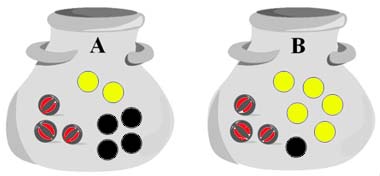Put your model where your mouth is: a choice prediction competition
 Subscribe to Decision Science News by Email (one email per week, easy unsubscribe)
Subscribe to Decision Science News by Email (one email per week, easy unsubscribe)
A CHOICE PREDICTION COMPETITION FOR DECISIONS UNDER RISK AND AMBIGUITY
SUBMISSION DEADLINE MAY 17, 2015
Ido Erev, that Eyal Ert, and Ori Plonsky (henceforth “we”) invite you to participate in a new choice prediction competition The goal of this competition is to facilitate the derivation of models that can capture the classical choice anomalies (including Allais, St. Petersburg, and Ellsberg paradoxes, and loss aversion) and provide useful forecasts of decisions under risk and ambiguity (with and without feedback).
The rules of the competition are described in http://departments.agri.huji.ac.il/cpc2015. The submission deadline is May17, 2015. The prize for the winners is an invitation to be a co-author of the paper that summarizes the competition (the first part can be downloaded from http://departments.agri.huji.ac.il/economics/teachers/ert_eyal/CPC2015.pdf).
Here is a summary of the basic idea. We ran two experiments (replication and estimation studies, both are described in the site), and plan to run a third one (a target study) during March 2015. To participate in the competition you should email us (to eyal.ert at mail.huji.ac.il) a computer program that predicts the results of the target study.
The replication study replicated 14 well-known choice anomalies. The subjects faced each of 30 problems for 25 trials, received feedback after the 6th trial, and were paid for a randomly selected choice. The estimation study examined 60 problems randomly drawn from a space of problems from which the replication problems were derived. Our analysis of these 90 problems (see http://departments.agri.huji.ac.il/cpc2015) shows that the classical anomalies are robust, and that the popular descriptive models (e.g., prospect theory) cannot capture all the phenomena with one set of parameters. We present one model (a baseline model) that can capture all the results, and challenge you to propose a better model. The models will be compared based on their ability to predict the results of the new target experiment. You are encouraged to use the results of the replication and estimation studies to calibrate your model. The winner will be the acceptable model (see criteria details in the site) that provides the most accurate predictions (lowest mean squared deviation between the predicted choice rates and the choice rates observed in the target study).


